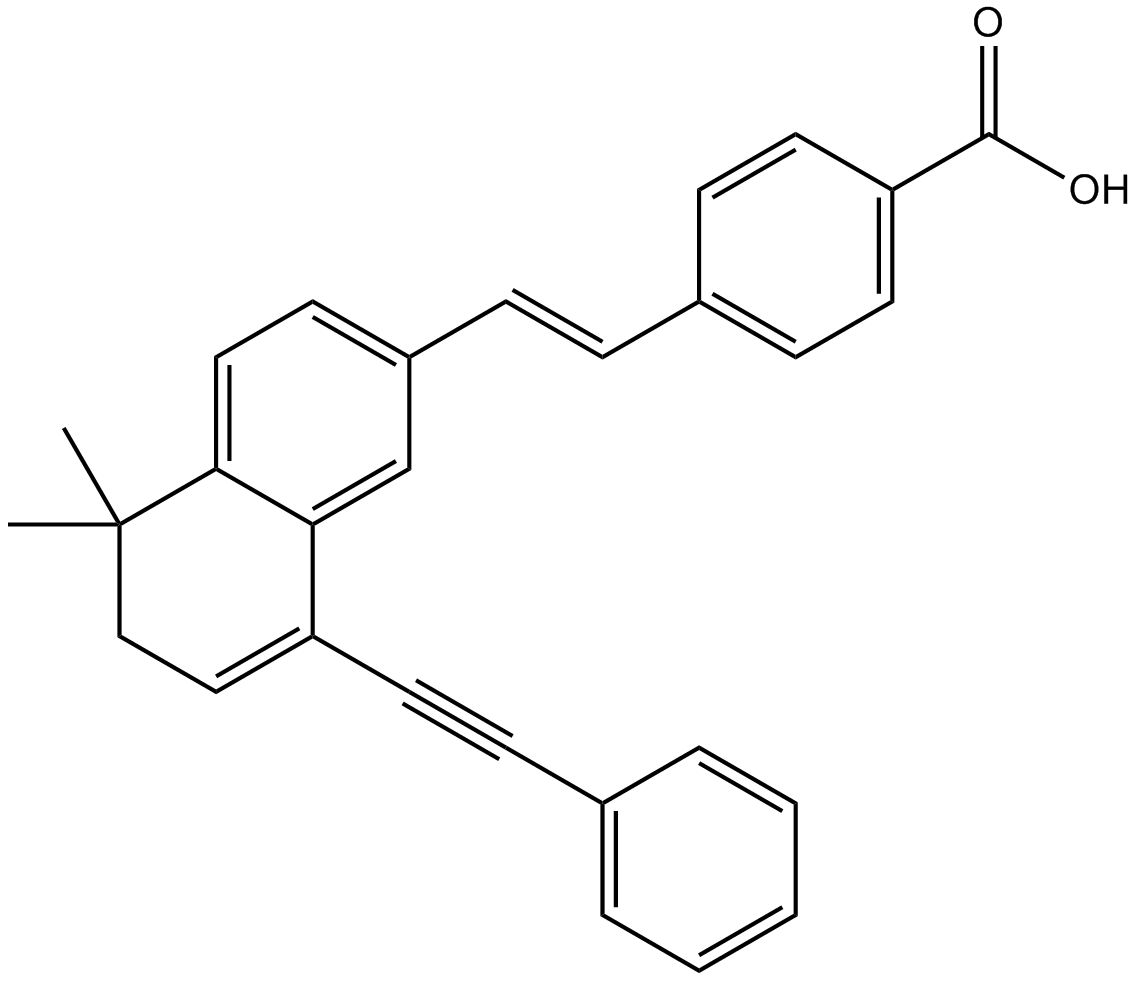BMS 493 (Synonyms: BMS 204493) |
| Catalog No.GC15648 |
Pan-RAR inverse agonist
Products are for research use only. Not for human use. We do not sell to patients.

Cas No.: 215030-90-3
Sample solution is provided at 25 µL, 10mM.
BMS493 is an inverse agonist of pan-retinoic acid receptors (pan-RARs). This compound has been shown to increase nuclear corepressor (NCoR) interaction with RARs.
The retinoic acid receptor (RAR), a type of nuclear receptor , is a ligand-dependent transcription factor that is activated by 9-cis retinoic acid and all-trans retinoic acid. Binding of agonist ligands to RAR results in dissociation of corepressor and recruitment of coactivator protein that, in turn, promotes transcription of the downstream target gene into mRNA and eventually protein. This protein controls a number of physiological processes including cell growth, differentiation, survival, and death.
In cellular culture, pretreatment of BMS493 on MEPM cells blocked atRA-induced apoptotic indexes. Mechanistically, this component completely inhibited atRA-induced Sub-G1 fraction, DNA fragmentation, and caspase-3 activation.1.
In vivo, inhibition of RAR signaling with BMS493 induced a very high degree of congenital diaphragmatic hernia, which was associated with a marked left–right sidedness that depended on the timing of drug delivery2.
References:
1. Yu Z, Han J, Lin J, et al. Apoptosis induced by atRA in MEPM cells is mediated through activation of caspase and RAR. Toxicological sciences : an official journal of the Society of Toxicology. 2006;89(2):504-509.
2. Clugston RD, Zhang W, Alvarez S, et al. Understanding abnormal retinoid signaling as a causative mechanism in congenital diaphragmatic hernia. American journal of respiratory cell and molecular biology. 2010;42(3):276-285.
Average Rating: 5 (Based on Reviews and 34 reference(s) in Google Scholar.)
GLPBIO products are for RESEARCH USE ONLY. Please make sure your review or question is research based.
Required fields are marked with *




















